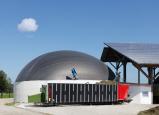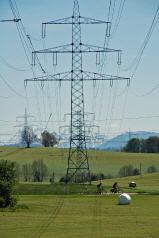Individual aims of RWTH Aachen University
As the academic partner in the IRENE project, the RWTH is seeking answers to the following questions:
- To what extent will the number of electric vehicles envisaged for 2020 have an impact on the distribution network? Will the loads be distributed stochastically in terms of time and location, or will they cause bottlenecks in places?
- Are standard load and feed-in profiles adequate for considering individual low-voltage networks? How can alternative load/feed-in profiles be described?
- What impact will the increasing asymmetries expected in the future (e.g. PV system feeds into phase L1, electric vehicle loads from phase L2) have on distribution networks?
- What type and level of metering technology will be required in order to have enough information to monitor the state of the distribution network at all times?
- To what extent is it possible to influence decentralized feed-in systems so that they do not overload the distribution network? What actuators are required to operate a control system for this?
- How should operation of the active distribution network be evaluated overall, taking environmental, technical and economic aspects into consideration?
To find robust answers to these questions, in collaboration with its field partner AÜW and technology partner Siemens, the RWTH Aachen University will operate metering equipment and control systems in a selected subnetwork to gather data. To underpin research findings, stochastic models and tools to simulate network states will be used.
Models and methods will be developed at RWTH Aachen which will later facilitate designing the active distribution networks described above. Using the information and data models to model the load of electric vehicles and charging stations in distribution networks, it will be possible to estimate the future load on the grid. In order to describe the individual behavior of vehicle users adequately, the University is focusing on developing a georeferenced traffic model which, based on the movement profiles identified by the project partners, will simulate traffic flows and consequently enable extrapolation of realistic forecasts of the load profiles expected from e-mobility.
By combining forecasting models with realistic feed-in and energy consumption data, it is possible to identify any additional network upgrading work or smart network integration concepts required. Comparatively high capacity electric vehicles and photovoltaic systems are often integrated as single phase in the distribution networks. The resulting grid disturbances can lead to asymmetries in the AC system. To analyze these effects, a simulation environment is created to automate computation of a large number of possible scenarios for the market penetration of e-mobility
and renewable energy converters so that any asymmetries arising can be described and analyzed.
Finally, RWTH Aachen University will develop a methodology for the cost-effective dimensioning of actuator and metering technology in the distribution network. The aim here is to determine both the right number and the correct placement of metering and control stations for distribution networks generally based on network topologies and the extent of decentralized energy conversion.
A technical eco-efficiency analysis will also be performed to evaluate the future operation of the grid. To do this, a set of criteria will be identified and agreed with the partners which will serve as the basis for holistic analysis of all the economic, technical and ecological aspects of the operation of distribution networks.
In summary, RWTH Aachen University aims to develop:
- Forecasting models and development scenarios for feed-in, usage and e-mobility.
- A simulation tool, including a scenario database for partially automated grid computation.
- Methodology for cost-effective dimensioning of actuator and metering technology in the distribution network.
- Evaluation methodology for active distribution networks.




